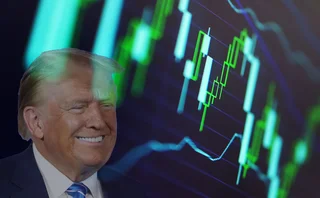
Will last look disclosures come to FX derivatives?
JPM and NatWest have published their swaps and options last look windows – will others follow suit?
Whenever a liquidity provider publishes a standardised disclosure for foreign exchange dealing terms online, as required by the Global FX Committee, we read each one with interest.
The most interesting aspect, of course, is whether the LP is explicitly saying that it will not be applying any additional hold times on top of any last look checks it may need to do to ensure prices have not gone stale. These additional hold times have effectively been outlawed by the GFXC and in subsequent comments from the UK’s Financial Conduct Authority.
However, when examining these disclosures recently, what also caught our eye is that two banks – JP Morgan and NatWest Markets – went a step further and disclosed their last look windows for FX derivatives.
For those interested, at JP Morgan the last look window for spot, forwards and swaps is between 0.7 and 9 milliseconds (ms), while for FX options it’s between 0.187 and 12.451 seconds.
At NatWest, “FX forwards, including FX time options and the forward element of FX swaps” last look times are between 2 and 257ms, the latter it says being the large majority of transactions. FX options are between 223ms and 1,240ms.
While not mandatory, the banks said they disclosed these times in a bid to boost transparency and encourage a fairer marketplace for clients.
The question then is whether disclosures of last look times for FX derivatives will become the norm.
For now, it looks like the answer to that question is broadly “no”. FX market participants argue that derivatives are still largely manual and voice traded, and that those users are generally not as sensitive to latency as those in the spot market.
But some banks acknowledge that a small set of clients do care about latency in FX derivatives pricing, and therefore such information could become important to these specific players. One European bank is actively working on improving its technology to be able to conduct its last look checks for non-spot FX products as quickly as possible, though it does not disclose how long these checks typically take.
Some believe this might become more important for swaps trading, given the spot element of the product. And as forwards and swaps become more electronified, latency may become more of an issue.
With 10 LPs yet to publish their FX disclosures ahead of the GFXC’s August 1 deadline – Bank of America posted its disclosure late on May 12 – we should know the answer pretty soon.
Only users who have a paid subscription or are part of a corporate subscription are able to print or copy content.
To access these options, along with all other subscription benefits, please contact info@risk.net or view our subscription options here: http://subscriptions.risk.net/subscribe
You are currently unable to print this content. Please contact info@risk.net to find out more.
You are currently unable to copy this content. Please contact info@risk.net to find out more.
Copyright Infopro Digital Limited. All rights reserved.
As outlined in our terms and conditions, https://www.infopro-digital.com/terms-and-conditions/subscriptions/ (point 2.4), printing is limited to a single copy.
If you would like to purchase additional rights please email info@risk.net
Copyright Infopro Digital Limited. All rights reserved.
You may share this content using our article tools. As outlined in our terms and conditions, https://www.infopro-digital.com/terms-and-conditions/subscriptions/ (clause 2.4), an Authorised User may only make one copy of the materials for their own personal use. You must also comply with the restrictions in clause 2.5.
If you would like to purchase additional rights please email info@risk.net
More on Our take
Why a Trumpian world could be good for trend
Trump’s U-turns have hit returns, but the forces that put him in office could revive the investment strategy
Roll over, SRTs: Regulators fret over capital relief trades
Banks will have to balance the appeal of capital relief against the risk of a market shutdown
Thrown under the Omnibus: will GAR survive EU’s green rollback?
Green finance metric in limbo after suspension sees 90% of top EU banks forgo reporting
Has the Collins Amendment reached its endgame?
Scott Bessent wants to end the dual capital stack. How that would work in practice remains unclear
Talking Heads 2025: Who will buy Trump’s big, beautiful bonds?
Treasury issuance and hedge fund risks vex macro heavyweights
The AI explainability barrier is lowering
Improved and accessible tools can quickly make sense of complex models
Do BIS volumes soar past the trend?
FX market ADV has surged to $9.6 trillion in the latest triennial survey, but are these figures representative?
DFAST monoculture is its own test
Drop in frequency and scope of stress test disclosures makes it hard to monitor bank mimicry of Fed models








